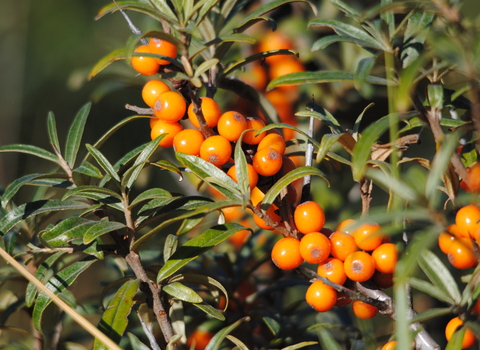
©Amy Lewis
Sea-buckthorn
Sea-buckthorn is a spiny, thicket-forming shrub of sand dunes. It's native to the east coast of England but considered an invasive species elsewhere. It is most obvious in autumn when it is full of bright orange berries.
Scientific name
Hippophae rhamnoidesWhen to see
January to DecemberSpecies information
About
Sea-buckthorn is a very spiny shrub, native to sand dunes along the east coast of England. It forms dense thickets with thorny twigs and, although it has small green flowers, is most noticeable in the autumn when it displays an abundance of bright orange berries.It is also often found in other dune systems in the UK, where it has spread and become invasive after being planted to help stabilise the dune systems. The dense thickets can out-compete and shade out smaller species that would typically inhabit areas of mobile dunes.
